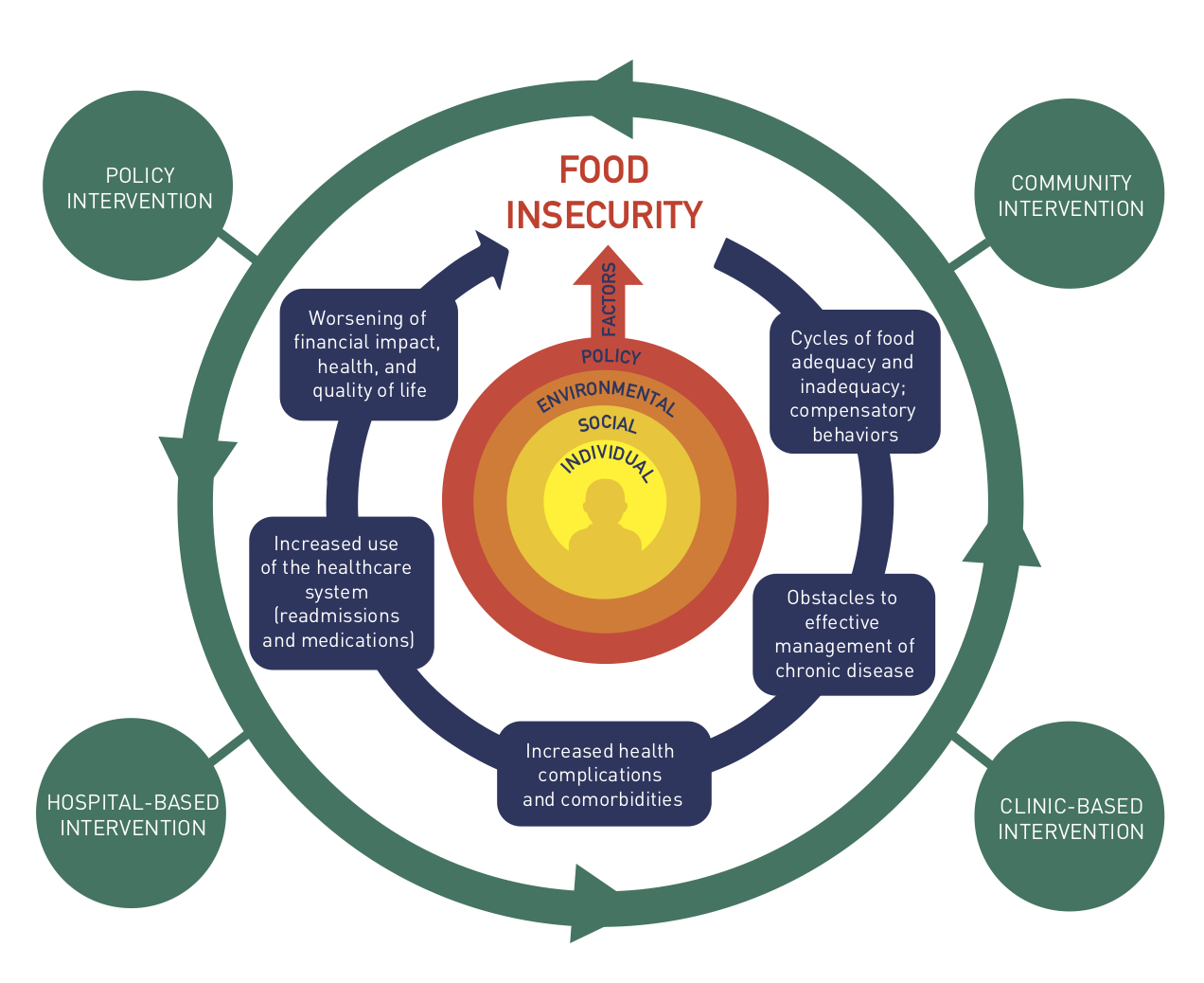In 2014, 17.4 million US households were food insecure[1] — that’s 14 percent of households with limited or uncertain access to adequate food. Meanwhile, seven out of 10 deaths annually (and 86% of health care costs) are the result of chronic disease.[2] A growing body of literature illustrates how food insecurity perpetuates a cycle of poor chronic disease management and increased spending on health care. The effects are particularly acute in older Americans.
TACKLING HUNGER seeks to find and disseminate effective strategies to address food insecurity and its relationship to acute medical events in people with chronic diseases. Through cutting edge, actionable research, we intend to drive public policy change and program innovation at the federal, state, community, and institutional levels. The project focuses on adults aged 50 and older with chronic disease who experience food insecurity; it has three components: A toolbox, A study, and An Evaluation.
Reversing the Cycle of Food Insecurity and Chronic Disease in Older Americans
This conceptual framework was developed by the Tackling Hunger project as a visual overview of the negative cycle of impacts that food insecurity has on health, and the types of interventions that have the potential to reverse the cycle. Intervention intensity and dose should be considered to maximize the impact of individual interventions; alignment across interventions in a manner that is mutually reinforcing will enhance potential for reversing the cycle. The Tackling Hunger project examines components of the cycle and interventions that aim to reverse it, and offers proposals for improving health outcomes through integrated community, health care, and policy solutions.
The framework was adapted from a similar model developed by Hilary Seligman and Feeding America


